How to help your loved one with reduced mobility
If you have a loved one who struggles to move around, you may have wondered what you can do to help. They may have gradually become less mobile, or they may have had a sudden change in their mobility after illness or an injury. Whatever the circumstances, reduced mobility can rob people of their confidence and independence. By offering support to a loved one with reduced mobility, you can enable them to make and exercise choices in their lives.
Whatever your loved one’s impairment, there are things you can do to help them move more freely and improve their quality of life. Regular movement, however that looks for them, can help to tackle both the root causes and knock-on effects of reduced mobility.
What can cause reduced mobility?
Reduced mobility is common in older adults, but it can come about at any age for a wide range of reasons. If your loved one has difficulty walking, balancing, or navigating everyday objects, they may have reduced mobility. The most common causes of reduced mobility are:
Ageing
Older age is one of the most common risk factors for reduced mobility. As we get older, our bodies change and we start to slow down a bit. From the age of 55, we lose around 1% of our muscle mass every year. Becoming less mobile with age may be considered normal, but it doesn’t have to be inevitable.
Chronic health conditions
Chronic conditions such as diabetes and arthritis are also a common cause of reduced mobility. Strength and balance impairments can lead to mobility difficulties too. Pain and fear of falls can understandably put people off movement. Breathlessness, caused by lung conditions like COPD, can also be a barrier to movement.
Visual impairments
Mobility is a key issue for many people with a visual impairment, who can struggle with orientation and moving around safely within their environment.
Why should you promote mobility?
Being less mobile can be deeply frustrating for the person with the mobility impairment, especially if they are used to being more active. Reduced mobility can also lower someone’s quality of life, particularly if it prevents them from doing the things that they enjoy. There can be knock on effects of reduced mobility on their health too, including:
- Difficulty sleeping
- Joint pain
- Loss of appetite
- Fluid build-up in the legs, feet and hands
Pressure ulcers - Loss of muscle strength
- Unhealthy weight gain
- Low mood and anxiety
The benefits of encouraging mobility
Encouraging and enabling the person you care for to be more mobile can help to improve their health and quality of life. Even small changes can make a huge difference. The benefits include:
- Better sleep
- Improved circulation
- Increased muscle strength and bone density
- Improved mood
- Greater opportunities to socialise and get outside
Tips to help you promote mobility for an elderly loved one
You know how important mobility is, but how can you get your loved one moving around safely? If you have any concerns, or if your loved one’s GP isn’t aware of their reduced mobility, speak to them before you begin. They can check for underlying health issues and offer treatment if needed.
Tailoring the activities to their needs is key. Make sure you understand what it is your loved one wants to achieve, and what their starting point is. If they struggle with everyday activities, like getting in and out of a car, then choose exercises that are appropriate. Once you’ve checked it’s safe for your loved one to start increasing their movement, you’re ready to start. Here are some tips on how to improve mobility in elderly and disabled people:
1. Suggest that they stand up (or move) once every hour
Create an environment that encourages sustainable movement, rather than fitness.
A manageable way to achieve this is with movement ‘snacks’ – brief bursts of light movement, spread throughout the day. Motivate your loved one to stand up once an hour. Ask them to lightly move their arms and legs while they’re stood up. If they can’t stand, there are plenty of seated exercises. they can do. For example, using a foot peddler for a few minutes each day is a simple way to improve circulation and muscle strength.
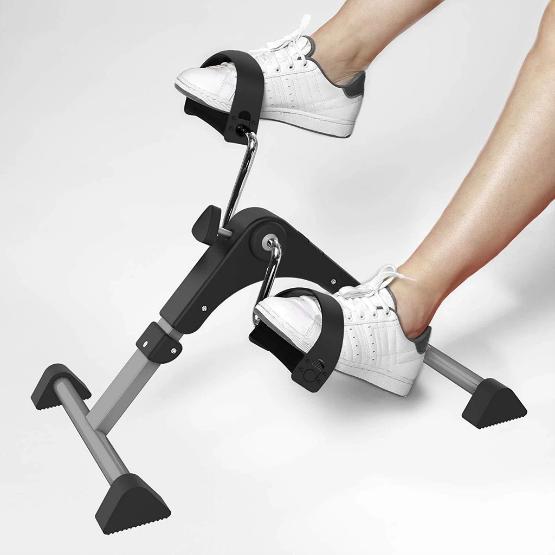
2. Help them to do gentle stretches
The benefits of regular stretching for elderly and disabled people include lower muscle pain and stiffness. Stretching also helps to improve circulation, balance and coordination. It may even reduce the risk of injury!
Encourage them to do a few minutes of stretching, two times a week. Remember that many of these stretches can be done sitting. Here are a few tips to get started:
- Hold each stretch for 5 to 10 seconds
- Repeat the same movement several times in a row
- Never stretch to the point of pain
- Flexibility decreases if you stop stretching, so you may have to go back to basics after long periods of lower movement, e.g. after a hospital stay
The NHS has plenty of resources to help you too. A great place to start is an ankle stretch, which can be done while sitting down. It’s an easy, simple movement that punches well above its weight in terms of health benefits. Alongside improving ankle strength and flexibility, it also lowers the risk of developing a blood clot.
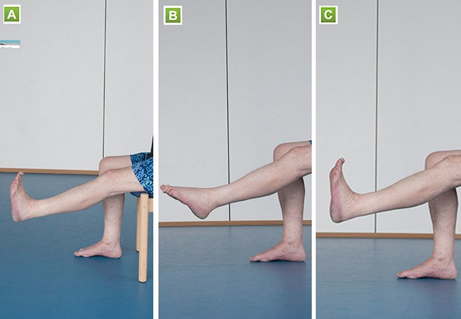
3. Buy adjustable furniture
The ability to stand without assistance from another person is key to greater independence and freedom. But everyday activities like getting in and out of bed or a chair can become increasingly difficult for people with reduced mobility. This can create a series of difficulties, from accessing a bathroom to preparing food. At Adjustamatic we have a range of beds such as the autovariable adjustable bed which is ideal for those with reduced mobility- designed to give you the most comfortable night’s sleep.
Building strength and coordination is important, but adjustable furniture, such as riser recliner chairs, can help too. Adjustamatic riser recliner chairs have a built-in auto lift system that allows the user to lift and tilt the chair, helping them to their feet.
Riser recliner chairs can also reduce some of the negative effects of spending a lot of time sitting down, like pain and stiffness. The ‘rise’ function of these chairs will support the user’s legs, knees and hips. By elevating their feet, this position helps to reduce swelling in their feet caused by sitting for long periods. Cyclo-Therapy® massage technology, which is built into some Adjustamatic orthopedic adjustable beds and riser recliner chairs, helps to improve circulation too.
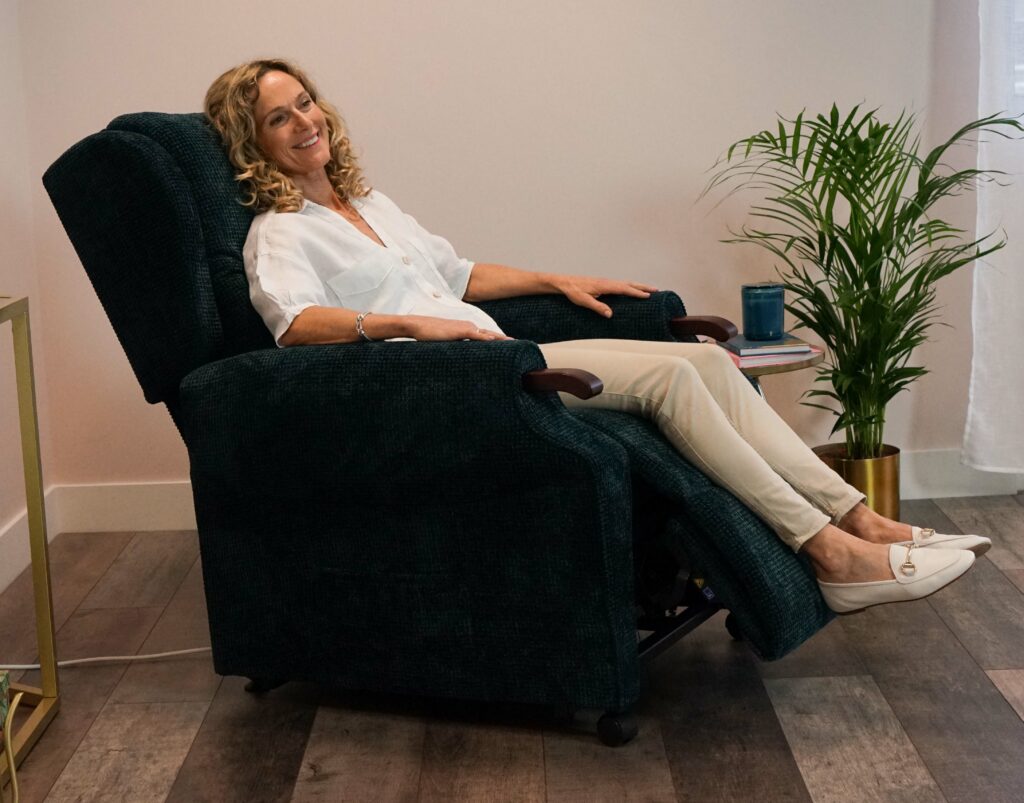
4. Include some enjoyable activities that help to build muscle
We lose muscle mass as we get older and during long periods of inactivity. This means it’s important to encourage the person you care for to do a few muscle-building exercises regularly.
If your loved one is sufficiently mobile, then moderate-intensity, low-impact activities are a great way to get active, without harming their joints. Yoga, for example, is just as effective as running in lowering the risk of heart disease. It’s a great way to strengthen muscles too. The NHS provides chair-based yoga and Pilates videos that you could use to get started.
If your loved one has a specific health condition, try searching online for charities that support people with that condition. The MS society, for example, has lots of online resources to help people with MS get more active.
For those with lower mobility, you can encourage them to try muscle strengthening activities that can be done at home, using a chair for support. For example, ask them to try calf raises, while holding the back of a chair for balance.
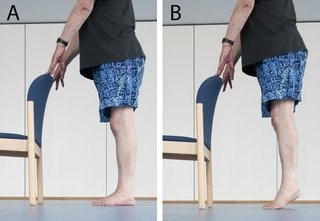
5. Remember that mobility aids enable independence
We have a tendency to view mobility aids, such as wheelchairs, as restrictive. But in reality, mobility aids give people back the ability to get around, access work, a social life and the outdoors.
If your loved one is struggling to get around inside the home, there are plenty of aids that you can encourage them to try. Installing grab rails and placing non-slip matting under rugs can be particularly useful in helping to prevent falls for someone who is unsteady on their feet. Beds and other furniture can have handrails installed too, which can help your loved one feel secure when getting in and out of bed.
6. Set realistic goals
Expecting someone to leap back on their feet after surgery or a fall can be counterproductive. Focus on small steps that everyone feels happy with, and that are manageable enough to commit to for more than one day. Try to remove unnecessary barriers, like exercise clothes or complicated fitness routines. Keep things simple and integrate them into everyday activities. Remember, any movement is vastly better than none.
Remembering to take care of yourself too
Caring for a friend or family member can be hard work, both physically and emotionally. Remember that it’s important to take care of yourself too. Talk to someone if you are struggling or worried about your caring responsibilities. Carers UK, Scope and Age UK are all great places to turn to.
Investing in adjustable furniture can help your loved one get back on their feet
Adjustamatic have been providing comfort and mobility solutions for over 50 years. So while adjusting to living with reduced mobility can be difficult, finding furniture that supports your loved one’s health and wellbeing is easy. If you’re unsure which one of our products could help you, we have a collection of buying guides for Adjustamatic products that can help you to make an informed decision when purchasing from us. You can also learn more about how we can help your loved one, through our consultation process to buy the right adjustable bed or riser recliner chair for them.
For any questions, please don’t hesitate to give us a call on 0800 689 9823 (9am-5pm Mon-Fri), or drop us a message. We can organise a home visit for you to trial any bed, as well as give you professional and reliable advice. Let’s help you find the adjustable bed you deserve!
